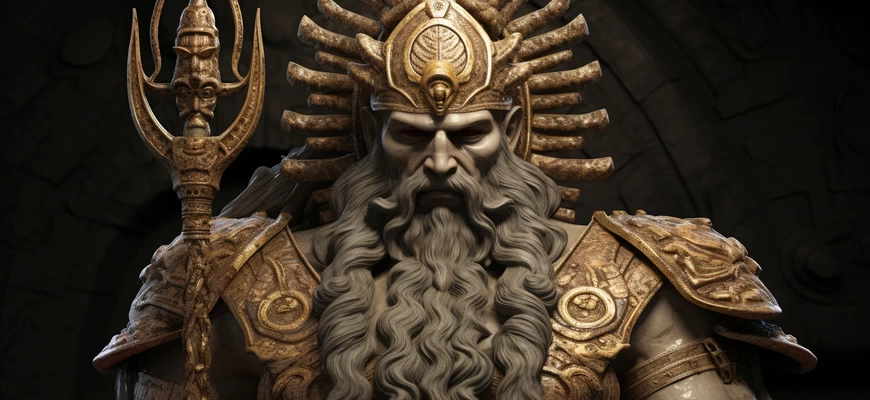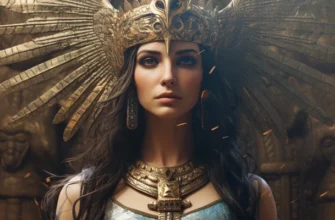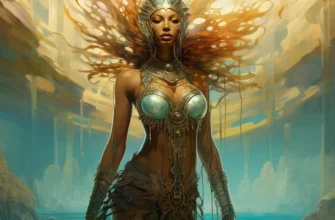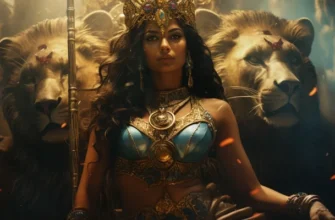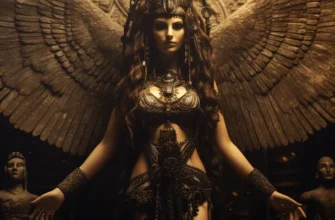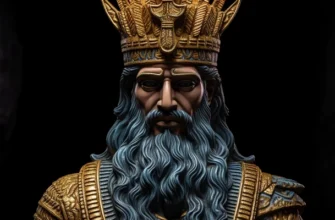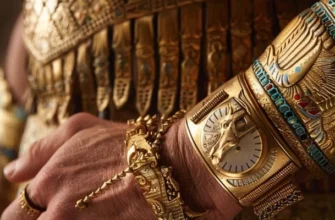The Sumerians, one of the oldest civilizations, worshipped many gods, but Ninurta held a special place among them. The god of war and the heavens, Ninurta embodied power and justice. His attributes included a hammer, arrows, and a hawk. Ninurta’s role in the Sumerian pantheon was extremely important, and his cult was accompanied by various rituals and festivals. Modern research and archaeological findings continue to uncover and explore the mysteries of this ancient god who leaves his mark on Sumerian history and culture
- The role of god in the Sumerian pantheon
- Origin and attributes of Ninurta
- Origin of Ninurta
- Attributes of Ninurta
- The Mythical Story of the Creation of the God Ninurta
- Ninurta’s role in Sumerian culture
- Functions and responsibilities of the god in the Sumerian pantheon
- Holidays and rituals associated with Ninurta
- Historical information and archaeological findings
- References to Ninurta in Sumerian texts
- Found artifacts and sacred sites associated with the cult of Ninurta
- Influence on modern times
- The legacy and reflection of the cult of Ninurta in the modern world
- Conclusion
The role of god in the Sumerian pantheon
In the Sumerian pantheon, the god played an important role in determining the nature, fate, and life of civilization. The gods were categorized by function, and each had its own unique attributes and responsibilities. For example, Ninurta, the god of war, embodied power and justice, protecting the Sumerian people from enemies. The god’s role was determined not only by mythical aspects but also by his influence on the daily life of the Sumerians through rites, festivals, and rituals. The Sumerian gods were not only objects of worship, but also an integral part of the cultural and social order of this ancient civilization.
Origin and attributes of Ninurta
Origin of Ninurta
Ninurta, the Sumerian god of war, emerged in ancient times as the embodiment of power and the protector of the people. His origin is connected to the mythological stories of the creation of the world and the pantheon of the Sumerians.
Ninurta, the Sumerian god of war, has its roots in ancient times, where the Sumerians developed their unique civilization in what is now southern Iraq. He is a member of the pantheon of Sumerian gods and is recognized as one of the most important and powerful deities.
- Origins and Mythology: Ninurta is believed to be the son of Enlil, a great Sumerian god who represented power over the heavens and the earth. He is often depicted as a warrior god, wielding a hammer or mace, symbolizing his role as a god of war and protector.
- Functions and Role: Ninurta served a number of functions in the Sumerian pantheon. His main role was to protect the gods and the Sumerian people from threats, provide military leadership, and bring victories in battles.
- Attributes and Symbolism: In literature and images, Ninurta was often depicted as a hero defeating misery and demons. His attributes include a hammer and bow, as well as symbolic objects that indicated his power over natural forces.
- Cult and Rites: His cult and rituals were an important part of Sumerian religious practice. People offered prayers and sacrifices in Ninurta’s honor, especially before military events.
- Legacy: The role and significance of Ninurta leave their mark on Sumerian history, archaeological finds, literature, and art, reflecting the profound influence of this god on the culture and worldview of the Sumerian people.
Ninurta not only reflects the religious vision of the Sumerians, but is also an important aspect of their cultural and social life, helping to reveal aspects and values of the ancient Sumerian civilization.
Attributes of Ninurta
Ninurta had several unique attributes:
Hammer of Sumer (Gir, Kutar): A symbol of power and dominating authority used by the god in battles and in establishing order.
Arrows and Bow: As the god of war, Ninurta was proficient in archery, which emphasized his unparalleled ability in combat.
Hawk: As the god’s totem and companion, the hawk symbolized power over the heavens and defined his bird-like image.
These attributes not only defined Ninurta’s character, but also emphasized his important role as a warrior deity in the Sumerian pantheon.
The Mythical Story of the Creation of the God Ninurta
According to Sumerian myths, Ninurta emerged as a result of complex cosmic events and the actions of divine forces. His creation is associated with the struggle between the gods for power in the celestial hierarchy.
According to legend, Ninurta’s mother, the goddess Ninhursag, decided to create a powerful protector for her people. She joined forces with other deities who gave Ninurta their attributes and parts of their powers. Hammer, arrows, and power over the sky were given to him during this magical creation.
Ninurta was thus born as a son of heaven and earth, chosen to lead the Sumerian people in battle and ensure order in the world. His mythical origins reflected his prominent role as the great god of war and protector of civilization.
Ninurta’s role in Sumerian culture
- God of War and Protection
Ninurta played a key role in the military aspects of the culture, being recognized as the god of war and protection.
- Symbol of Justice
As the ruler of the heavens, Ninurta embodied justice and order, and his cult promoted social and moral values.
- Rituals and Holidays
Specific rituals and festivals dedicated to Ninurta included rituals of warrior training, prayers for protection, and gratitude for victories in battles.
- Harvest Protection and Agricultural Rites
As the god of the fields, Ninurta played a role in protecting the harvest, and he was responsible for the rituals associated with the beginning of the agricultural season.
- Art and Literature
The influence of Ninurta’s cult was manifested in Sumerian art and literature through works that paid homage to his heroic role and warrior glory.
- Historical Essence
The spread of the cult of Ninurta in archaeological finds and literary texts serves as a source for the study of the history and religion of the Sumerian civilization.
Ninurta’s role in Sumerian culture was extremely important, and his influence extended to all spheres of life, from military affairs to agricultural rites and art.
Functions and responsibilities of the god in the Sumerian pantheon
The god Ninurta in the Sumerian pantheon performed key functions and had a variety of duties. His main role was to protect the Sumerian people in military conflicts, and he was recognized as a god of war and protection. However, his functions were not limited to military aspects. He also had power over the celestial hierarchy and acted as the ruler of the heavens, determining the order in the cosmos.
Ninurta was noted for his justice, acting as a judge and resolving conflicts according to the principles of justice. He also served as the patron saint of farmland, guaranteeing crop protection and promoting agricultural development. Called to be a teacher of the art of war, Ninurta passed on his warrior wisdom and techniques to his followers.
In addition, he served as a protector of cities and shrines, ensuring their safety and inviolability. Thus, the figure of Ninurta was an important element of Sumerian culture, capable of influencing all spheres of life in this ancient civilization.
Holidays and rituals associated with Ninurta
Holidays and rituals dedicated to Ninurta played a significant role in the religious life of the Sumerians. One of the most important holidays was a celebration of warrior art and victories in wars. During this festival, Sumerian warriors organized various rituals and competitions that honored Ninurta’s wisdom and power.
The rituals also included religious celebrations, such as prayers and sacrifices in honor of the god in temples and shrines. During these ceremonies, the Sumerian population expressed gratitude for the protection provided by Ninurta and asked for his blessings and support.
The festivals could also be linked to the cycle of nature, particularly agricultural rites in honor of Ninurta as the patron saint of the harvest. These ceremonies included various rituals aimed at freeing agricultural products from sinister influences and ensuring their fertility.
The festive calendar of the Sumerians was full of events in which Ninurta occupied an important place, and this contributed to the maintenance of the religious and cultural community and the expression of respect for the god in various aspects of their lives.
Historical information and archaeological findings
Historical information and archaeological findings related to the cult of Ninurta play an important role in the discovery and understanding of the ancient Sumerian civilization.
Archaeological excavations in the area of ancient Sumerian cities have uncovered numerous artifacts and structures related to the cult of Ninurta. Shrines where rituals and prayers were performed have been discovered among the archaeological remains, providing information on the ways in which the god was worshipped.
The texts of Sumerian tablets also preserve stories and myths associated with Ninurta. These written sources indicate religious rites, festivals, and important events related to the cult of the god in Sumerian society.
Some of the finds include images of Ninurta, his symbolic attributes, and objects used in religious rites. These artifacts contribute to our knowledge of Sumerian religious and cultural practices.
Together, these sources make a significant contribution to our understanding of the role and influence of the cult of Ninurta on ancient Sumerian civilization.
References to Ninurta in Sumerian texts
References to Ninurta are found in numerous Sumerian texts, which include myths, epics, and religious tablets. These texts reveal various aspects of his divine personality and role in Sumerian mythology.
The epic Lugalbanda and Ninurta: This epic recounts the exploits of Lugalbanda, Gilgamesh’s father, and his interactions with Ninurta. This text highlights Ninurta’s role as a deity who supports the heroes in their struggles and journeys.
The Myth of the Sumerian Agricultural Deities: In texts on agricultural deities, Ninurta is often mentioned as the patron saint of harvest and fertility. He acts as a deity who ensures abundance through his power over natural forces.
Rituals and prayers:Sumerian textual sources also contain rituals and prayers dedicated to Ninurta. These texts describe religious rites and appeals to the god for protection, victories, and prosperity.
Literary works: In Sumerian poetry and literary works, poetic statements and praises of Ninurta are often found, used to express reverence and worship for his majesty.
These references in Sumerian texts reflect the importance of Ninurta in the mythology, religion, and culture of the Sumerian people.
Found artifacts and sacred sites associated with the cult of Ninurta
Archaeological excavations and finds in Sumeria reveal numerous artifacts and sacred sites associated with the cult of Ninurta.
Shrines and Temples: Finds of shrines and temples where religious rites and prayers in honor of Ninurta were performed. The architectural elements and religious symbols found at these sites indicate the importance of the god’s cult.
Ritual objects: Archaeologists have found ritual objects, including images of Ninurta, that were used in religious rites and ceremonies. These artifacts were often made of various materials such as stone, clay, or metal.
Chronicle tablets: Finds of textual materials containing chronicles and mythological stories that mention images and stories associated with Ninurta. This literary evidence was used to preserve and transmit religious knowledge.
Sculptures and Reliefs: Sculptures and reliefs depicting Ninurta have been found on the walls of temples and other religious sites. These works of art served not only as objects of worship, but also as ways to visually express grandeur and religious ideas.
These artifacts and sites testify to the greatness and importance of the cult of Ninurta in Sumerian society, in which he was revered and honored in various aspects of their lives.
Influence on modern times
The influence of the cult of Ninurta on modern times is determined mainly by its impact on the history and cultural aspects of Sumerian civilization. Although the Sumerian civilization no longer exists, its legacy is evident in many aspects:
Religious History and Mythology:Understanding the cult of Ninurta contributes to the disclosure of the religious history and mythology of ancient civilizations. Its images and legends reflect the worldview and religious practices of the Sumerians.
Archaeological Research:Archaeological finds and excavations related to the cult of Ninurta provide a unique perspective on the material and religious culture of the Sumerians. They help to reconstruct their customs, rituals, and daily life.
Study of History and Religion:The literary texts that have survived from the Sumerian civilization have become an object of study for historians, archaeologists, and religious scholars. They expand our knowledge of human development and the formation of religious ideas.
Cultural Influence:Elements of Sumerian culture, including art, architecture, and literature, can have an impact on the cultural research and creativity of modern people. The aesthetics and symbolism of Sumerian artwork can be a source of inspiration for modern creators.
Although the modern religious and cultural scene is significantly different from the Sumerian era, the study and understanding of the Ninurta cult provides a unique perspective on the cultural roots and development of humanity in history.
The legacy and reflection of the cult of Ninurta in the modern world
The legacy and reflection of the Ninurta cult in the modern world can be found in several aspects:
Symbolism and Iconography:Elements of iconography, such as images of the hammer, arrows, bow, or hawk that symbolize Ninurta, may appear in contemporary art, design, and symbolism. This may indicate the preservation and use of archaic symbols in a modern context.
Mythological Reflections:Mythological themes and subjects related to Ninurta may be reflected in contemporary literary and artistic works. Authors can use the myths of this god as a source of inspiration for new stories.
Military Symbolism:Since Ninurta was a god of war, his image and symbolism can be reflected in modern military and military traditions, including the symbolism and emblems of military units.
Historical Relevance:The study of the cult of Ninurta and Sumerian civilization can be of great importance to historians, archaeologists, and religious scholars, contributing to the understanding of the evolution of religious beliefs and cultural influences on human development.
Relevant Themes:Certain aspects of Ninurta’s cult, such as protection, justice, and military wisdom, may be relevant to contemporary discussions of security, justice, and military conflict.
Although the Sumerian cult itself and Ninurta as a god were immersed in the historical past, their influence can be found in contemporary themes, symbolism, and creativity, indicating the persistence of some cultural and religious markers over time.
Conclusion
Ninurta proved to be not only a god of war, but also an inexhaustible source of influence on Sumerian history and culture. His role as patron of military affairs, protector, ruler of the heavens, and wise judge inextricably influenced various spheres of Sumerian life.
In Sumerian culture, Ninurta was not only an object of religious worship, but also a symbol of courage, power, and justice. His image is reflected in literature, art, architecture, and religious rituals, testifying to the deep influence of this god on the formation of Sumerian identity.
Ninurta acted as an invisible protector who ensured both military security and balance in nature and society. His cult and mythology gave the Sumerians hope and simplification in managing their own lives, and his influence is preserved in archaeological remains and literary works as a memorial to the rich heritage of this ancient civilization.
